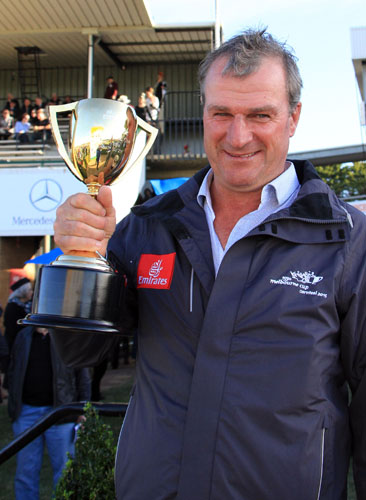This week I will deal in more detail with the training routine as it applies to assessing the pre-race condition of any horse.

To recap, last week I touched briefly on the trainer’s dilemma in getting a horse to optimum fitness level.
As we work through the main elements of trying to decide the level of fitness of a horse resuming from a spell or making it’s race debut, this week I will deal in more detail with the training routine as it applies to assessing the pre-race condition of any horseBasically the main areas to focus on involve;
As an aid to understanding the form cycle I will run through a typical schedule for a horse resuming from a spell.
Each horse is an individual when it comes to a form cycle and this impacts on how they are prepared for a return to the race track.As I discussed last week some of Australia’s leading trainers have pre training establishments to reduce the amount of unproductive time each horse occupies a stable box ie their prizemoney earning capacity.
I mentioned David Hayes and Tom Dabernig and showed you an example of their strike rates with debutantes and first uppers. Team Williams is also very good at this and of course Australia’s current red hot trainer Darren Weir has a similar operation but interestingly his success is not so much with horses early on in their preparations but with horses later on in their preparations. And I will come to the significance of this a bit later.But whichever way you look at it, there is a minimum amount of basic training that has to go into any horse before it is fit enough to resume racing.
For some horses, training is an endless regime of getting them back from injury or major setbacks.That does not mean the level of fitness is good enough for a first up win – just sufficient that the horse will not go over the top and be gutted by the fresh up run before it gains in fitness after two or three more runs before it is then ready to win in a suitable race.
A typical training/racing cycle for a thoroughbred would be something along the lines of;In these circumstances it is easy to detect trainer’s race preparation patterns not only for an individual horse but as a general rule for most horses in his stable.
The trainer will use a combination of track work and trials to get the horse fit to race and it will depend on just what level of fitness is required before a horse begins racing that will dictate the mix of trials and track work used between races. And this is where a horse’s form cycle will come into play.For example a middle distance galloper or stayer will do more long striding work and perhaps a single trial before resuming whereas a sprinter is likely to have more trials and fast work.
It is clear that the more time you take with the basic preparation before heading off to the races is an important factor in how many good runs a trainer can get from a horse in a single campaign.And this is where the statistics for Darren Weir get interesting. Clearly he is not in a rush to get horses back to racing early, preferring instead to take plenty of time at the front end of a looming campaign ensuring the ground work is done before racing.
Next week I will uncover some interesting facts about Darren Weir and how to use those statistics like the pro's do to improve your punting and more importantly, your bottom line..




